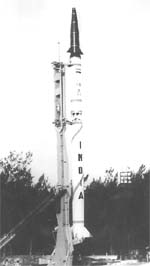Blast off
Blast off

with the successful testing of Agni ii on April 11, India has developed a combat-ready missile designed to deliver nuclear warheads anywhere in Pakistan and deep inside China. However, some environmentalist say that the testing was in violation of the defence ministry's commitment to the Orissa High Court.
Two days before the test, the interim test range at Chandipur had filed an affidavit in the court on behalf of the defence ministry, stating that there was no plan to test-fire any missile during the mating and nesting period of the endangered Olive Ridley sea turtles. The affidavit was in response to a public interest petition by the Wildlife Society of Orissa. The society wanted a halt to all activities, particularly missile testing on Wheeler Island to avoid disturbing the endangered turtles.
Dramatic improvements have been made in Agni ii : heavier nuclear warheads deliverance capability; new second stage solid fuel motor which has increased the range of the missile to 2,000 km; improved accuracy using advanced guidance systems, including real time course corrections; and mobile platform which can be adapted for rail or road use makes it ready to fire from anywhere. The missile now is always in a ready-to-fire mode and can be launched within five minutes.
Pakistan, in turn, has quickly demonstrated its capability to strike most of India with nuclear-tipped missiles by test firing Ghauri ii , a liquid-fuel based missile with a range of 1,500 km and Shaheen with a range of 600 km.







